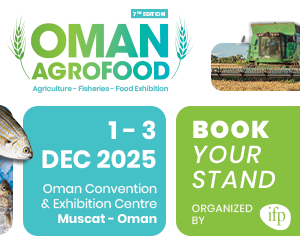As global humanitarian aid dwindles, experts are urging African nations to look inward — specifically toward strengthening cold chain infrastructure — to protect harvests, stabilize supply chains, and feed vulnerable populations.
At the recent Nutrition for Growth (N4G) Summit in Paris, South Africa’s Agriculture Minister John Steenhuisen emphasized the urgency of self-reliance, stating: “We need to become far more resilient.”
The Cold Chain Gap
One of the most critical — yet overlooked — factors in Africa’s food security crisis is the continent’s fragile cold chain infrastructure. In sub-Saharan Africa, an estimated 37% of food is lost before reaching consumers. These post-harvest losses disproportionately affect vulnerable communities by limiting food availability and driving up costs.
The situation is further exacerbated by setbacks in energy access. The dismantling of Power Africa, a U.S. initiative aimed at expanding electricity access, poses new risks to farms, healthcare providers, and food processors. According to the International Energy Agency, 57% of African households still lack reliable electricity — a fundamental need for cold storage, irrigation, and food processing.
Why Industrial Cooling Matters
Improving cold chain infrastructure will not solve food insecurity overnight, but it is a foundational step. Sectors such as agriculture, food manufacturing, and retail rely heavily on refrigeration to prevent spoilage and ensure products reach markets safely.
Reliable cold storage also plays a vital role in intra-African trade. As international assistance declines, Africa must be able to move food efficiently from surplus-producing regions to areas facing shortages. Doing so can prevent widespread hunger, reduce mass displacement, and help avert resource-driven conflict.
Cooling-as-a-Service (CaaS): A Scalable Solution
To bridge the infrastructure gap, Cooling-as-a-Service (CaaS) is emerging as a transformative solution. This model allows farmers and manufacturers to access modern, energy-efficient cooling systems without high upfront investment.
CaaS providers enter long-term partnerships with food producers, ensuring technical optimization, maintenance, and efficient energy use — all while reducing financial risk. These services are already being adopted across Kenya, Nigeria, Rwanda, and South Africa, expanding access to refrigeration at scale.
Infrastructure as a Path to Resilience
The key message from the N4G summit was clear: in this new era, resilience must be homegrown. Investing in cold chain infrastructure — rather than relying on sporadic aid — will empower African nations to protect their harvests and feed their people.
This shift will require cooperation across governments, the private sector, and development agencies. It calls for smart investment, policy innovation, and a renewed focus on giving producers the tools to grow, store, and distribute food sustainably.
Ultimately, food security isn’t just about production volumes — it’s about how effectively we preserve and deliver what we grow.
Source: Bizcommunity.com













































































